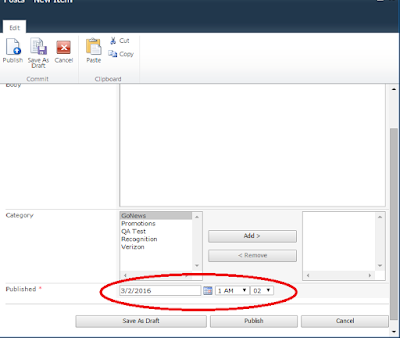Description:
You can remotely debug a SharePoint farm solution in
your local Visual Studio without having SharePoint locally installed.
Assumptions:
1. You
have a ready on premise SharePoint Server
2. You
have Visual Studio 2013 installed on your local machine. (ex. Windows 7/Windows
10)3. You have created identical debug user accounts
on both the local host and server machines and add to Local Administrator group
on both machines (not sure if admin group is necessary, but better to add it in
Administrators group).
Execution
in Windows Registry:
1. Go to your SharePoint Server and export
15.0 hive from regedit.exe (Run As Administrator)-[HKEY_LOCAL_MACHINE\SOFTWARE\Microsoft\Shared Tools\Web
Server Extensions\15.0]
2. Enter a meaningful name for this exporting file
and save.
3. Copy the exported ‘.reg’ file to your local
development machine.
4. On your local development machine, open
your regedit.exe (Run as Administrator) and navigate to same path [HKEY_LOCAL_MACHINE\SOFTWARE\Microsoft\Shared
Tools\Web Server Extensions\15.0]
5. Select
File > Import > Select your copied .reg file and click Open and you are
done.
Steps
to perform in Visual Studio 2013:
1. Open
Visual Studio 2013 as Administrator.
2. Create
a new project (I created a SharePoint 2013 – Visual Web Part)
3. In the
below wizard, do not change any values, do not click Validate. Simply click
Finish.
4. Copy
the required SharePoint DLL to your local development machine and add them to
References in your VS solution. (I added only Microsoft.SharePoint.dll. You may
need more SharePoint DLL depending on SharePoint classes used in your code.)
Configuration
Steps:
1. When
you are done coding, build the solution and copy pdb file to the SharePoint
server. (You will find this pdb file in bin folder)
2. Right
click solution and choose Publish. This will create wsp file.
3. Copy
this wsp file to the SharePoint server and deploy the solution:
Use
Add-SPSolution and
Install-SPSolution.
4. Activate the web part from Site Settings and add
it to any SharePoint page.
5. Navigate
to one of the below location to find your solution folder:
C:\Windows\assembly\
GAC_MSIL\
C:\Windows\Microsoft.NET\assembly\GAC_MSIL\
6. Copy the pdb file to your solution folder. Now your
solution’s DLL and PDB file are in same folder.
7. On the SharePoint server navigate to [C:\Program
Files (x86)\Microsoft Visual Studio 12.0\Common7\IDE\Remote Debugger\x64]
and run msvsmon.exe as Administrator. You will have below window now running.
8. In
the Debugging Monitor window choose > Tools > Permissions and check if
the account by which you are running your Visual Studio on your local machine
has Debug permission, if not grant it.
9. Open
Windows PowerShell on SharePoint Server and run this command:
C:\Windows\System32\inetsrv\appcmd list
wp
This command will list all WP process
currently running. Note down the WP process ID that you want to attach in
Visual Studio. (Example shown below. My Web Part is deployed to 11724,
therefore I will choose only this WP ID while attaching to the process in
Visual Studio).
Back
to Visual Studio 2013:
1. Tools
> Attach to Process > Enter “YourDomainName\YourDebugAccount@YourSharePointServerName”
in Qualifier field and click Find button.
Example: Octaware\spstp_octaware@tamouh_srv01
2. Choose
details returned and press Select.
3. Select
“Show processes from all users” and press Refresh button.
4. Among
the listed w3wp process, choose the one that you had noted earlier in above
step 8.
5. Refresh
your SharePoint page and happy remote debugging. (Assuming that your breakpoint
is under Page_Load event.)

















